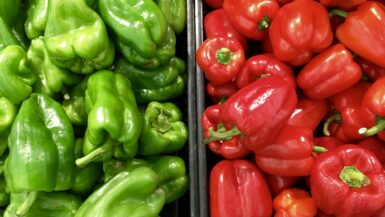Maintaining a healthy diet is essential for overall health and well-being. A low-fat, high-fiber diet is one of the most effective ways to achieve a healthy diet. It is important to understand the benefits of consuming a low-fat, high-fiber diet and how it can improve your health. In this article, we will explore the importance of eating a low-fat, high-fiber diet for a healthy diet and how it can help you lead a healthier life.
Understanding the basics of a low-fat, high-fiber diet
A low-fat, high-fiber diet is a way of eating that focuses on consuming foods that are low in fat and high in fiber. This type of diet is essential for maintaining good health and preventing chronic diseases such as heart disease, diabetes, and cancer.
Foods that are high in fiber are typically plant-based foods such as fruits, vegetables, whole grains, legumes, nuts, and seeds. These foods are rich in nutrients that are essential for maintaining good health, including vitamins, minerals, and antioxidants.
On the other hand, a diet that is high in fat, especially saturated and trans fats, can increase the risk of developing chronic diseases. High-fat foods are also typically high in calories, which can contribute to weight gain and obesity.
A low-fat, high-fiber diet can be beneficial for people of all ages and can help to maintain a healthy weight, reduce the risk of chronic diseases, and improve overall health and well-being. In the following sections, we will explore the benefits of a low-fat, high-fiber diet in more detail, and provide tips for incorporating more fiber into your diet.
The benefits of a low-fat, high-fiber diet for weight loss
One of the primary benefits of a low-fat, high-fiber diet is weight loss. This type of diet is naturally lower in calories than a diet that is high in fat, and the fiber content helps to keep you feeling full and satisfied.
Studies have shown that people who follow a low-fat, high-fiber diet tend to consume fewer calories overall, which can lead to weight loss. Additionally, a high-fiber diet can help to reduce the absorption of fat and calories from food, further supporting weight loss efforts.
Incorporating more fruits, vegetables, whole grains, and legumes into your diet can also help to increase your intake of essential nutrients while reducing your intake of unhealthy fats and calories. This can lead to improved overall health and well-being in addition to weight loss.
It is important to note that weight loss is not the only benefit of a low-fat, high-fiber diet. This type of diet can also help to reduce the risk of chronic diseases such as heart disease, diabetes, and cancer, as we will discuss in the following sections.
How a low-fat, high-fiber diet can reduce the risk of heart disease
Heart disease is a leading cause of death worldwide, and diet plays a significant role in its development. A low-fat, high-fiber diet has been shown to reduce the risk of heart disease in several ways.
Firstly, a diet that is high in saturated and trans fats can increase LDL (bad) cholesterol levels, which can lead to the buildup of plaque in the arteries. This can eventually lead to heart disease. A low-fat diet can help to reduce LDL cholesterol levels and prevent plaque buildup.
Secondly, a diet that is high in fiber can help to reduce blood pressure and inflammation, both of which are risk factors for heart disease. Fiber can also help to improve cholesterol levels by reducing the absorption of cholesterol in the intestines.
Thirdly, a high-fiber diet can help to maintain a healthy weight, which is also a key factor in reducing the risk of heart disease.
To reduce the risk of heart disease, it is important to follow a low-fat, high-fiber diet that is rich in fruits, vegetables, whole grains, legumes, nuts, and seeds. Additionally, reducing the intake of processed foods, sugary drinks, and foods high in saturated and trans fats can further support heart health.
Overall, a low-fat, high-fiber diet can help to reduce the risk of heart disease by improving cholesterol levels, reducing blood pressure and inflammation, and supporting a healthy weight.
The role of fiber in digestive health and disease prevention
Fiber plays a crucial role in digestive health and disease prevention. It is essential for maintaining regular bowel movements and preventing constipation. Additionally, a diet that is high in fiber can help to reduce the risk of several types of cancer, including colorectal cancer.
There are two types of fiber: soluble and insoluble. Soluble fiber dissolves in water and forms a gel-like substance in the intestines, which can help to lower cholesterol levels and regulate blood sugar levels. Insoluble fiber does not dissolve in water and helps to promote regular bowel movements.
Both types of fiber are important for digestive health and disease prevention. A diet that is rich in fiber can help to prevent constipation, hemorrhoids, and diverticulitis. Additionally, a high-fiber diet can help to reduce the risk of colon cancer by promoting regular bowel movements and removing waste from the body more efficiently.
To increase your fiber intake, it is important to eat a variety of fruits, vegetables, whole grains, legumes, nuts, and seeds. Additionally, drinking plenty of water can help to prevent constipation and promote regular bowel movements.
Overall, a low-fat, high-fiber diet can help to support digestive health and prevent chronic diseases such as cancer. By incorporating more fiber-rich foods into your diet, you can improve your overall health and well-being.
Tips for incorporating more fiber into your diet
Incorporating more fiber into your diet is easier than you might think. Here are some tips to help you get started:
1. Start slow
If you’re not used to eating a lot of fiber, it’s important to start slow and gradually increase your intake. This will allow your body to adjust to the increased fiber and prevent digestive discomfort.
2. Choose whole foods
Whole foods such as fruits, vegetables, whole grains, legumes, nuts, and seeds are naturally high in fiber and are also rich in other essential nutrients. Choose these foods instead of processed foods that are often low in fiber.
3. Snack on fruits and vegetables
Fruits and vegetables are easy to snack on and are a great way to increase your fiber intake. Keep a bowl of fruit on your desk or pack some cut-up veggies for a mid-day snack.
4. Swap out refined grains for whole grains
Swap out refined grains such as white bread and pasta for whole grains such as whole wheat bread and brown rice. These foods are higher in fiber and will help to keep you feeling full and satisfied.
5. Add beans and legumes to your meals
Beans and legumes such as lentils and chickpeas are a great source of fiber and protein. Add them to soups, stews, and salads for an extra boost of fiber.
6. Use nuts and seeds as toppings
Nuts and seeds such as almonds, chia seeds, and flax seeds are a great source of fiber and healthy fats. Use them as toppings for oatmeal, yogurt, and salads.
By incorporating these tips into your diet, you can easily increase your fiber intake and reap the many health benefits of a low-fat, high-fiber diet.
The best low-fat, high-fiber foods to include in your diet
Including a variety of low-fat, high-fiber foods in your diet can help you to achieve optimal health and well-being. Here are some of the best low-fat, high-fiber foods to include in your diet:
Fruits and Vegetables
Fruits and vegetables are naturally low in fat and high in fiber. Some of the best options include:
– Berries such as raspberries, strawberries, and blackberries
– Apples and pears
– Leafy greens such as spinach, kale, and collard greens
– Broccoli, cauliflower, and Brussels sprouts
– Carrots and sweet potatoes
Whole Grains
Whole grains are a great source of fiber and are also rich in other essential nutrients. Some of the best options include:
– Whole wheat bread and pasta
– Brown rice
– Quinoa
– Oats
– Barley
Legumes
Legumes such as beans, lentils, and chickpeas are a great source of fiber and protein. Some of the best options include:
– Black beans
– Kidney beans
– Lentils
– Chickpeas
– Peas
Nuts and Seeds
Nuts and seeds are a great source of fiber, healthy fats, and other essential nutrients. Some of the best options include:
– Almonds
– Walnuts
– Chia seeds
– Flax seeds
– Pumpkin seeds
How to Plan a Low-Fat, High-Fiber Meal Plan
Planning a low-fat, high-fiber meal plan can seem daunting at first, but with a little bit of knowledge, it can be quite simple. Here are some tips to help you plan a healthy and balanced meal plan:
Understand the Basics
Before you start planning your meals, it’s important to understand the basics of a low-fat, high-fiber diet. This type of diet focuses on consuming foods that are low in fat and high in fiber, such as fruits, vegetables, whole grains, and lean proteins. These foods provide essential nutrients, while also helping to reduce the risk of heart disease, stroke, and other chronic illnesses.
Set Realistic Goals
When planning your meal plan, it’s important to set realistic goals. Start by making small changes, such as swapping out high-fat foods for low-fat options, and gradually increasing your fiber intake. Aim to consume at least 25-30 grams of fiber per day, and limit your intake of saturated and trans fats.
Incorporate a Variety of Foods
To ensure that you’re getting all of the nutrients your body needs, it’s important to incorporate a variety of foods into your meal plan. Include plenty of fruits, vegetables, whole grains, lean proteins, and healthy fats. Experiment with new recipes and try to include a variety of colors and textures in your meals.
Plan Ahead
One of the keys to success with a low-fat, high-fiber diet is to plan ahead. Take some time each week to plan out your meals and snacks, and make a grocery list of the foods you’ll need. This will help you stay on track and avoid unhealthy impulse purchases.
Make Healthy Substitutions
When planning your meals, look for ways to make healthy substitutions. For example, swap out white pasta for whole wheat pasta, or use Greek yogurt instead of sour cream. These small changes can make a big difference in your overall health.
Stay Hydrated
Drinking plenty of water is also important when following a low-fat, high-fiber diet. Aim to drink at least 8-10 cups of water per day, and limit your intake of sugary drinks and alcohol.
Sample Meal Plan
Here’s an example of a low-fat, high-fiber meal plan:
– Breakfast: Oatmeal with fresh berries and almond milk
– Snack: Apple slices with almond butter
– Lunch: Grilled chicken breast with a mixed green salad and quinoa
– Snack: Carrots and hummus
– Dinner: Baked salmon with roasted vegetables and brown rice
The Impact of a Low-Fat, High-Fiber Diet on Blood Sugar Control
Maintaining healthy blood sugar levels is essential for overall health and well-being. A low-fat, high-fiber diet can have a significant impact on blood sugar control, particularly for individuals with diabetes or pre-diabetes. Here are some key ways that this type of diet can help regulate blood sugar:
Fiber Slows Down Digestion
Fiber is a type of carbohydrate that is not digested by the body. Instead, it passes through the digestive system largely intact. This means that it doesn’t cause a rapid spike in blood sugar levels like other types of carbohydrates can. Instead, fiber slows down the digestion of other carbohydrates, which can help regulate blood sugar levels.
Low-Fat Foods Have a Lower Glycemic Load
Foods that are high in fat can have a significant impact on blood sugar levels. This is because fat slows down digestion and can cause carbohydrates to be absorbed more slowly. Low-fat foods, on the other hand, have a lower glycemic load, which means they cause a slower rise in blood sugar levels.
High-Fiber Foods Are Low on the Glycemic Index
The glycemic index is a measure of how quickly a food causes a rise in blood sugar levels. High-glycemic foods, such as white bread and sugary drinks, cause a rapid spike in blood sugar levels. Low-glycemic foods, such as high-fiber fruits and vegetables, cause a slower rise in blood sugar levels. By consuming a diet that is high in fiber and low in fat, individuals can help regulate their blood sugar levels and reduce their risk of developing diabetes.
Sample Low-Fat, High-Fiber Meal Plan for Blood Sugar Control
Here’s an example of a meal plan that is low in fat and high in fiber, which can help regulate blood sugar levels:
– Breakfast: Greek yogurt with fresh berries and a sprinkle of chia seeds
– Snack: Carrots and hummus
– Lunch: Grilled chicken breast with a mixed green salad and quinoa
– Snack: Apple slices with almond butter
– Dinner: Baked salmon with roasted vegetables and brown rice
The Connection Between a Low-Fat, High-Fiber Diet and Longevity
A low-fat, high-fiber diet has been shown to have a positive impact on overall health and longevity. Here’s a look at some of the ways that this type of diet can help you live a longer, healthier life:
Reduced Risk of Chronic Diseases
A low-fat, high-fiber diet can help reduce the risk of chronic diseases, such as heart disease, stroke, and diabetes. By consuming more fruits, vegetables, whole grains, and lean proteins, individuals can reduce their intake of unhealthy fats and sugars, which can contribute to these diseases.
Improved Digestive Health
Fiber is essential for good digestive health, as it helps to promote regular bowel movements and prevent constipation. A diet that is high in fiber can also help reduce the risk of colon cancer and other digestive disorders.
Weight Management
A low-fat, high-fiber diet can also help with weight management, which is an important factor in overall health and longevity. Foods that are high in fiber tend to be more filling, which can help individuals feel satisfied and reduce their overall calorie intake.
Sample Low-Fat, High-Fiber Meal Plan for Longevity
Here’s an example of a meal plan that is low in fat and high in fiber, which can help promote longevity:
– Breakfast: Oatmeal with fresh berries and almond milk
– Snack: Baby carrots with hummus
– Lunch: Grilled chicken breast with a mixed green salad and quinoa
– Snack: Apple slices with almond butter
– Dinner: Baked salmon with roasted vegetables and brown rice
Conclusion
Incorporating a low-fat, high-fiber diet into your lifestyle can have a positive impact on overall health and longevity. By reducing the risk of chronic diseases, improving digestive health, and helping with weight management, this type of diet can help you live a longer, healthier life. Consult with a healthcare professional before making any significant changes to your diet.





Leave a reply